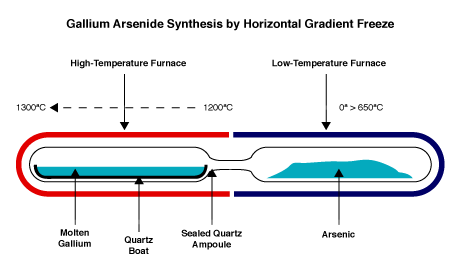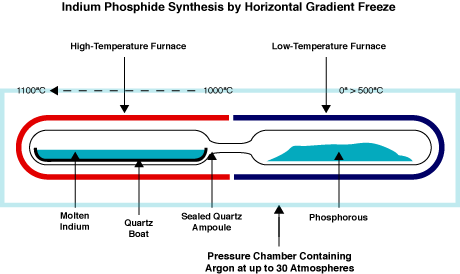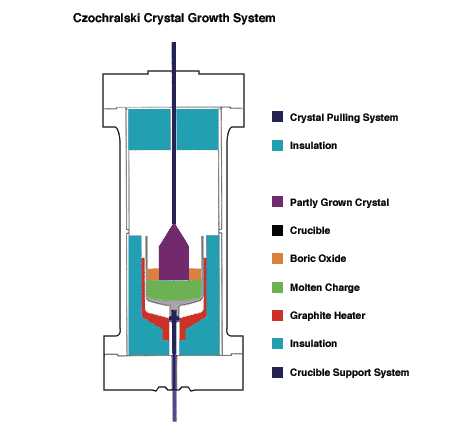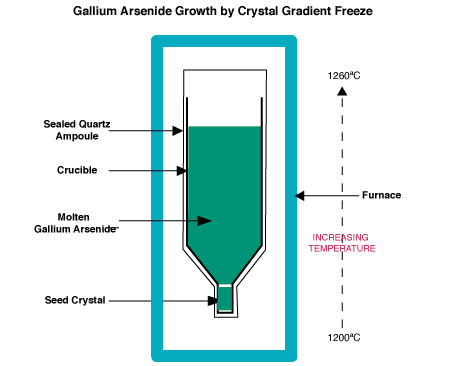Crystal Growth
Several different growth techniques are used for production of III-V compound semiconductor crystals at Wafer Technology. The growth method used depends on the required material type and properties. Basic details of the processes used are given below.
Horizontal Synthesis
Used for producing stoichiometric polycrystalline bars of the compounds
High purity elements (Ga, As, In and/or P) are contained within a quartz boat, sealed in a quartz ampoule and placed into a furnace chamber. The furnace chamber is heated up and a temperature gradient is then moved along the boat. Temperatures and pressures are dependant on the compound being synthesised.


Liquid Encapsulated Czochralski
Used for the manufacture of single crystals
The starting materials (either pre-synthesised polycrystalline chunks or, in the case of semi-insulating GaAs, elemental Ga and As) are placed in the growth crucible along with a pellet of boron trioxide. The crucible is placed inside a high pressure crystal puller and heated up.
At 460°C the boron trioxide melts to form a thick, viscous liquid which coats the entire melt, including the crucible (hence, liquid encapsulated). This layer, in combination with the pressure in the crystal puller, prevents sublimation of the volatile group V element.
The temperature is increased until the compound synthesises (temperatures and pressures are varied depending on which material is being produced). A seed crystal is then dipped, through the boron trioxide layer, into the melt. The seed is rotated and slowly withdrawn and a single crystal propagates from the seed.
Crystal growth is monitored by the use of CCTV cameras and measurements of weights, temperatures and pressures are made at regular intervals.

Vertical Gradient Freeze
Used for producing low dislocation density GaAs crystals
Chunks of polycrystalline GaAs, produced by horizontal synthesis, are placed in a crucible with a seed crystal of the required orientation. The crucible is then placed vertically in a furnace and a temperature gradient is moved up the length of the crystal (away from the seed).
Single crystal growth propagates from the seed crystal and, because the crystal forms in the shape of the crucible, diameter control of the ingot is relatively simple.


 Wafer Technology Ltd.
Wafer Technology Ltd.